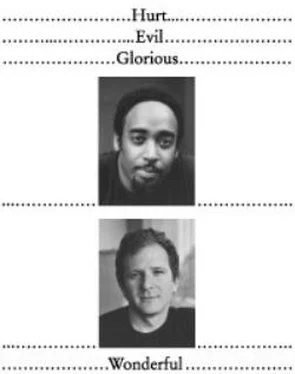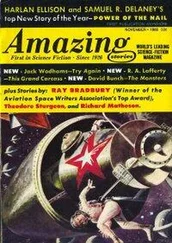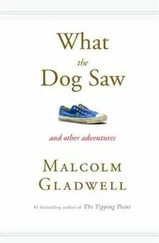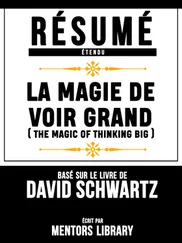Malcolm Gladwell - Blink - The Power of Thinking Without Thinking
Здесь есть возможность читать онлайн «Malcolm Gladwell - Blink - The Power of Thinking Without Thinking» весь текст электронной книги совершенно бесплатно (целиком полную версию без сокращений). В некоторых случаях можно слушать аудио, скачать через торрент в формате fb2 и присутствует краткое содержание. Жанр: Культурология, Психология, на английском языке. Описание произведения, (предисловие) а так же отзывы посетителей доступны на портале библиотеки ЛибКат.
- Название:Blink: The Power of Thinking Without Thinking
- Автор:
- Жанр:
- Год:неизвестен
- ISBN:нет данных
- Рейтинг книги:3 / 5. Голосов: 1
-
Избранное:Добавить в избранное
- Отзывы:
-
Ваша оценка:
- 60
- 1
- 2
- 3
- 4
- 5
Blink: The Power of Thinking Without Thinking: краткое содержание, описание и аннотация
Предлагаем к чтению аннотацию, описание, краткое содержание или предисловие (зависит от того, что написал сам автор книги «Blink: The Power of Thinking Without Thinking»). Если вы не нашли необходимую информацию о книге — напишите в комментариях, мы постараемся отыскать её.
Blink: The Power of Thinking Without Thinking — читать онлайн бесплатно полную книгу (весь текст) целиком
Ниже представлен текст книги, разбитый по страницам. Система сохранения места последней прочитанной страницы, позволяет с удобством читать онлайн бесплатно книгу «Blink: The Power of Thinking Without Thinking», без необходимости каждый раз заново искать на чём Вы остановились. Поставьте закладку, и сможете в любой момент перейти на страницу, на которой закончили чтение.
Интервал:
Закладка:
Dick Morris’s memoir is Behind the Oval Office: Getting Reelected Against All Odds (Los Angeles: Renaissance Books, 1999).
For the best telling of the Coke story, see Thomas Oliver, The Real Coke, the Real Story (New York: Random House, 1986).
For more on Cheskin, see Thomas Hine, The Total Package: The Secret History and Hidden Meanings of Boxes, Bottles, Cans, and Other Persuasive Containers (New York: Little, Brown, 1995); and Louis Cheskin and L. B. Ward, “Indirect Approach to Market Reactions,” Harvard Business Review (September 1948).
Sally Bedell [Smith]’s biography of Silverman is Up the Tube: Prime-Time TV in the Silverman Years (New York: Viking, 1981).
Civille and Heylmun’s ways of tasting are further explained in Gail Vance Civille and Brenda G. Lyon, Aroma and Flavor Lexicon for Sensory Evaluation (West Conshohocken, Pa.: American Society for Testing and Materials, 1996); and Morten Meilgaard, Gail Vance Civille, and B. Thomas Carr, Sensory Evaluation Techniques, 3rd ed. (Boca Raton, Fla.: CRC Press, 1999).
For more on jam tasting, see Timothy Wilson and Jonathan Schooler, “Thinking Too Much: Introspection Can Reduce the Quality of Preferences and Decisions,” Journal of Personality and Social Psychology 60, no. 2 (1991): 181-192; and “Strawberry Jams and Preserves,” Consumer Reports, August 1985, 487-489.
For more on the mind readers, see Paul Ekman, Telling Lies: Clues to Deceit in the Marketplace, Politics, and Marriage (New York: Norton, 1995); Fritz Strack, “Inhibiting and Facilitating Conditions of the Human Smile:
A Nonobtrusive Test of the Facial Feedback Hypothesis,” Journal of Personality and Social Psychology 54, no. 5 (1988): 768-777; and Paul Ekman and Wallace V. Friesen, Facial Action Coding System, parts 1 and 2 (San Francisco: Human Interaction Laboratory, Dept. of Psychiatry, University of California, 1978).
Klin has written a number of accounts of his research using Who’s Afraid of Virginia Woolf? The most comprehensive is probably Ami Klin, Warren Jones, Robert Schultz, Fred Volkmar, and Donald Cohen, “Defining and Quantifying the Social Phenotype in Autism,” American Journal of Psychiatry 159 (2002): 895-908.
On mind reading, see also Robert T. Schultz et al., “Abnormal Ventral Temporal Cortical Activity During Face Discrimination Among Individuals with Autism and Asperger’s Syndrome,” Archives of General Psychiatry 57 (April 2000).
Dave Grossman’s wonderful video series is called The Bulletproof Mind: Prevailing in Violent Encounters . . . and After.
The stories of police officers firing their guns are taken from David Klinger’s extraordinary book Into the Kill Zone: A Cop’s Eye View of Deadly Force (San Francisco: Jossey-Bass, 2004).
A number of studies have explored racial bias and guns, including the following: B. Keith Payne, Alan J. Lambert, and Larry L. Jacoby, “Best-Laid Plans: Effects of Goals on Accessibility Bias and Cognitive Control in Race-Based Misperceptions of Weapons,” Journal of Experimental Social Psychology 38 (2002): 384-396; Alan J. Lambert, B. Keith Payne, Larry L. Jacoby, Lara M. Shaffer, et al., “Stereotypes as Dominant Responses: On the ‘Social Facilitation’ of Prejudice in Anticipated Public Contexts,” Journal of Personality and Social Psychology 84, no. 2 (2003): 277-295; Keith Payne, “Prejudice and Perception: The Role of Automatic and Controlled Processes in Misperceiving a Weapon,” Journal of Personality and Social Psychology 81, no. 2 (2001): 181-192; Anthony Greenwald, “Targets of Discrimination: Effects of Race on Responses to Weapons Holders,” Journal of Experimental Social Psychology 39 (2003): 399-405; and Joshua Correll, Bernadette Park, Charles Judd, and Bernd Wittenbrink, “The Police Officer’s Dilemma: Using Ethnicity to Disambiguate Potentially Hostile Individuals,” Journal of Personality and Social Psychology 83 (2002): 1314-1329. This study is a videogame in which whites and blacks are presented in ambiguous positions and the player has to decide whether to shoot or not. Go to http://psych.colorado.edu/%7ejcorrell/tpod.html and try it. It’s quite sobering.
On learning how to mind-read, see Nancy L. Etcoff, Paul Ekman, et al., “Lie Detection and Language Comprehension,” Nature 405 (May 11, 2000).
On two-person patrols, see Carlene Wilson, Research on One- and Two-Person Patrols: Distinguishing Fact from Fiction (South Australia: Australasian Centre for Policing Research, 1991); and Scott H. Decker and Allen E. Wagner, “The Impact of Patrol Staffing on Police-Citizen Injuries and Dispositions,” Journal of Criminal Justice 10 (1982): 375-382.
The best account of the Conant story is by Conant’s husband, William Osborne, “You Sound like a Ladies Orchestra.” It is available on their Website, www.osborne-conant.org/ladies.htm.
The following articles were particularly helpful on changes in the world of classical music: Evelyn Chadwick, “Of Music and Men,” The Strad (December 1997): 1324-1329; Claudia Goldin and Cecilia Rouse, “Orchestrating Impartiality: The Impact of ‘Blind’ Auditions on Female Musicians,” American Economic Review 90, no. 4 (September 2000): 715-741; and Bernard Holland, “The Fair, New World of Orchestra Auditions,” New York Times, January 11, 1981.
Acknowledgments
A few years ago, before I began Blink, I grew my hair long. It used to be cut very short and conservatively. But I decided, on a whim, to let it grow wild, as it had been when I was a teenager. Immediately, in very small but significant ways, my life changed. I started getting speeding tickets—and I had never gotten any before. I started getting pulled out of airport security lines for special attention. And one day, while walking along Fourteenth Street in downtown Manhattan, a police van pulled up on the sidewalk, and three officers jumped out. They were looking, it turned out, for a rapist, and the rapist, they said, looked a lot like me. They pulled out the sketch and the description. I looked at it and pointed out to them as nicely as I could that, in fact, the rapist looked nothing at all like me. He was much taller and much heavier and about fifteen years younger (and, I added in a largely futile attempt at humor, not nearly as good-looking). All we had in common was a large head of curly hair. After twenty minutes or so, the officers finally agreed with me and let me go. On the grand scale of things, I realize, this was a trivial misunderstanding. African Americans in the United States suffer indignities far worse than this all the time. But what struck me was how even more subtle and absurd the stereotyping was in my case: this wasn’t about something really obvious, such as skin color or age or height or weight. It was just about hair. Something about the first impression created by my hair derailed every other consideration in the hunt for the rapist. That episode on the street got me thinking about the weird power of first impressions. And that thinking led to Blink —so I suppose, before I thank anyone else, I should thank those three police officers.
Now come the real thanks. David Remnick, the editor of the New Yorker, very graciously and patiently let me disappear for a year while I was working on Blink. Everyone should have a boss as good and generous as David. Little, Brown, the publishing house that treated me like a prince with The Tipping Point, did the same this time around. Thank you, Michael Pietsch, Geoff Shandler, Heather Fain, and, most of all, Bill Phillips, who deftly and thoughtfully and cheerfully guided this manuscript from nonsense to sense. I am now leaning toward calling my firstborn Bill. A very long list of friends read the manuscript in various stages and gave me invaluable advice—Sarah Lyall, Robert McCrum, Bruce Headlam, Deborah Needleman, Jacob Weisberg, Zoe Rosenfeld, Charles Randolph, Jennifer Wachtell, Josh Liberson, Elaine Blair, and Tanya Simon. Emily Kroll did the CEO height study for me. Joshua Aronson and Jonathan Schooler generously gave me the benefit of their academic expertise. The wonderful staff at Savoy tolerated my long afternoons in the table by the window. Kathleen Lyon kept me happy and healthy. My favorite photographer in the world, Brooke Williams, took my author photo. Several people, though, deserve special thanks. Terry Martin and Henry Finder—as they did with The Tipping Point —wrote long and extraordinary critiques of the early drafts. I am blessed to have two friends of such brilliance. Suzy Hansen and the incomparable Pamela Marshall brought focus and clarity to the text and rescued me from embarrassment and error. As for Tina Bennett, I would suggest that she be appointed CEO of Microsoft or run for President or otherwise be assigned to bring her wit and intelligence and graciousness to bear on the world’s problems—but then I wouldn’t have an agent anymore. Finally, my mother and father, Joyce and Graham Gladwell, read this book as only parents can: with devotion, honesty, and love. Thank you.
Читать дальшеИнтервал:
Закладка:
Похожие книги на «Blink: The Power of Thinking Without Thinking»
Представляем Вашему вниманию похожие книги на «Blink: The Power of Thinking Without Thinking» списком для выбора. Мы отобрали схожую по названию и смыслу литературу в надежде предоставить читателям больше вариантов отыскать новые, интересные, ещё непрочитанные произведения.
Обсуждение, отзывы о книге «Blink: The Power of Thinking Without Thinking» и просто собственные мнения читателей. Оставьте ваши комментарии, напишите, что Вы думаете о произведении, его смысле или главных героях. Укажите что конкретно понравилось, а что нет, и почему Вы так считаете.












